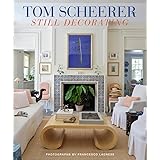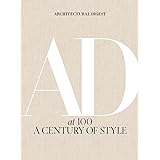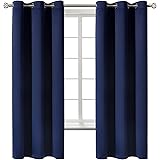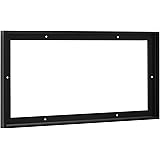Architect’s Secrets: Avoid These Design Mistakes Making Your Home Look Cheap
Transforming a house into a home is a deeply personal journey, yet many common pitfalls can inadvertently diminish its aesthetic appeal. While you might associate an expensive look with a hefty price tag, the truth, as highlighted in the video above, is far more nuanced. A home filled with costly items can still appear cluttered or awkward if not thoughtfully curated, conversely, a modest space can exude refinement and elegance when designed with intention.
The distinction between a home that feels luxurious and one that feels cheap often lies not in the cost of individual items, but in the application of fundamental design principles. These are skills accessible to everyone, regardless of budget. This guide expands on the architect’s insights, delving deeper into common design missteps and providing actionable strategies to elevate your living space, ensuring your home looks anything but cheap.
1. The Critical Role of Measuring: Avoiding Proportion Pitfalls
Skipping the measuring tape is a surprisingly common oversight in home design. Many homeowners assume they understand an item’s size based on online images or showroom appearances. However, this assumption often leads to furniture that either dwarfs a room or appears disproportionately small, creating an imbalanced and visually awkward space.
For instance, design studies suggest that up to 30% of online furniture returns are due to items not fitting the intended space or appearing different in scale. To prevent this, architects recommend using painter’s tape to map out furniture placement on your floor before purchasing. This simple technique allows you to visualize the exact footprint and proportion of each piece, ensuring everything fits harmoniously. Proper planning is a cornerstone of sophisticated interior design, preventing your space from looking cheap due to poor spatial judgment.
2. The Honesty of Materials: Why Faux Can Fall Flat
It’s tempting to emulate luxury finishes like solid walnut or marble with cheaper, faux alternatives when on a budget. However, attempting to replicate high-end materials with printed laminates often backfires. While seemingly a cost-effective solution, these materials often lack the depth, texture, and authenticity of the real thing.
Interior design research indicates that materials that are “honest” about their composition contribute more to a sophisticated aesthetic than those trying to mimic something they are not. Instead of a printed marble countertop, consider a solid-colored laminate that embraces its own character. Rather than a faux-walnut veneer, opt for a solid stained birch table. This alternative not only looks more genuine but often offers better durability and refinishing potential, making your home feel curated and authentic, not cheap.
3. Context is Key: Designing with Purpose
Drawing inspiration from beautiful homes visited during vacations is natural, yet ignoring your home’s unique context can lead to a jarring and cheap aesthetic. Forcing a beachy, coastal vibe into an urban apartment, for example, often results in a space that feels disconnected and theatrical rather than cohesive.
A recent survey on home staging found that properties reflecting their local architectural style and environment often command higher perceived value. Your home’s location, its existing architectural features, and even its history should inform your design choices. By embracing these elements, you create a space that feels authentic and harmonious, showcasing intentional design rather than a whimsical, out-of-place theme. However, if genuine playfulness is your aim, intentional kitsch can be highly effective, ensuring your home doesn’t look cheap by accident.
4. Mastering the Open Plan: Defining Zones with Intention
Open-plan layouts are celebrated for their flexibility and light, but they can inadvertently create a sense of disarray if not managed correctly. Without defined zones, these expansive spaces can confuse the eye, blurring the lines between living, dining, and kitchen areas and making the overall layout feel cheap and undefined.
Design experts frequently emphasize the use of area rugs as a powerful tool for spatial definition. Placing a rug beneath your living room furniture, for instance, visually anchors the seating area, creating a distinct “room within a room.” Furthermore, strategic furniture arrangement that highlights clear pathways and softens hard corners can enhance flow and make the space more intuitive to navigate. Utilizing furniture with legs or pulling pieces slightly away from walls also creates an illusion of greater space, making the environment feel more open and inviting without looking cheap.
5. The Art of Subtraction: Prioritizing Hidden Storage
While beautifully staged homes often inspire us to display decorative items, the mistake lies in prioritizing open shelving when practical storage cabinets are truly needed. This leads to a cycle where Pinterest-worthy finds are initially showcased, but everyday clutter eventually overtakes every available surface, making the space feel messy and cheap.
Organizational psychology studies indicate that visual clutter significantly contributes to feelings of stress and a perception of disorder. Investing in smart, hidden storage solutions is often more impactful for long-term beauty than buying more decorative pieces. Focus on what you can neatly tuck away rather than what you can put on display. This emphasis on functional hierarchy allows the truly meaningful items to shine, contributing to a serene and organized home aesthetic.
6. The Peril of Isolation: Inconsistent Mix-and-Match
Adoring individual items is perfectly fine, but focusing solely on isolated pieces without considering their cohesion with the rest of your space can result in a discordant and cheap look. While eclectic design can be stunning, it requires a masterful eye for balance and deliberate choices.
Without an understanding of color theory or stylistic harmony, a collection of beloved items can become a jumbled mess. For example, mixing warm and cool light temperatures or integrating gold and chrome hardware without a unifying element often creates visual dissonance. Research into aesthetic perception highlights that visual consistency, even within an eclectic scheme, is key to preventing a space from feeling chaotic. Instead of just buying what you love, consider how each piece contributes to a larger, harmonious narrative within your home.
7. The Trap of Uniformity: Embracing Thoughtful Variety
Conversely, striving for absolute uniformity can render a home flat, soulless, and equally cheap. Buying an entire furniture suite—dining table and chairs from the same retailer, matching sofa and armchair, identical lamps and artwork—strips a space of personality and creative depth.
Interior design principles emphasize the importance of contrast and texture to create visual interest. A home where everything matches perfectly can feel like a showroom, devoid of the unique character that makes a space truly inviting. For example, rather than purchasing a bedroom set, choose a bed frame that complements but doesn’t identically match your nightstands. Introduce artwork that speaks to your personality, even if it doesn’t “match” every color in the room. This deliberate breaking of perfect symmetry adds layers of interest and individuality, making your home feel authentic rather than cheap.
8. The Power of Layered Lighting: Beyond the Ceiling Fixture
Relying solely on overhead ceiling lights is a common design mistake that makes a room feel flat and uninspired. While efficient, these singular light sources often cast harsh, unflattering shadows, creating an atmosphere that lacks warmth and dimension, making even a well-decorated room feel cheap.
Lighting design studies consistently demonstrate that layered lighting—a combination of ambient, task, and accent lighting—is crucial for creating inviting spaces. Instead of one intense source, introduce floor lamps, table lamps, and sconces at different heights. Modern smart bulbs allow you to control brightness and color temperature, creating a warm, inviting glow that adapts to various moods and activities. This thoughtful approach to illumination can dramatically enhance a room’s atmosphere, adding depth and sophistication.
9. Beyond Bare Functionality: Injecting Personality
While “form follows function” is a core design principle, adhering too strictly to a minimalist philosophy can strip a home of its soul. Removing all non-essential items, such as physical family photos, art collections, or sentimental decor, in the name of reducing clutter can leave a space feeling sterile and impersonal, resembling a cheap furniture showroom rather than a lived-in home.
Psychological research on home environments suggests that personalized spaces contribute to greater comfort and well-being. Your home should reflect your unique tastes, values, and life experiences. Instead of bare walls, incorporate meaningful artwork or cherished collections. If you struggle with indecisiveness, start small: select one or two items that genuinely speak to you. This intentional inclusion of personal touches ensures your home feels authentic and cherished, preventing it from appearing bland or cheap.
10. The Unseen Value: Prioritizing Home Maintenance
Neglecting basic home maintenance is perhaps the simplest way to make a space feel cheap, regardless of its underlying design quality. Crooked cabinet doors, sun-bleached fabrics, worn-thin upholstery, or unpatched scuffs all contribute to a run-down appearance. While thrifting and a “shabby chic” aesthetic are popular, they only work when items are intentionally celebrated and well-presented.
Property value assessments often highlight how minor maintenance issues disproportionately affect perceived quality. For instance, a beautifully worn antique piece looks charming in a meticulously maintained room, but a similar item in a generally unkempt environment simply adds to the disarray. Simple fixes like painting over old walls, tightening loose hardware, or replacing outdated switches can have a transformative impact. Remember, the quality of your space is defined by care and creativity, not just budget, ensuring your home never looks cheap.











